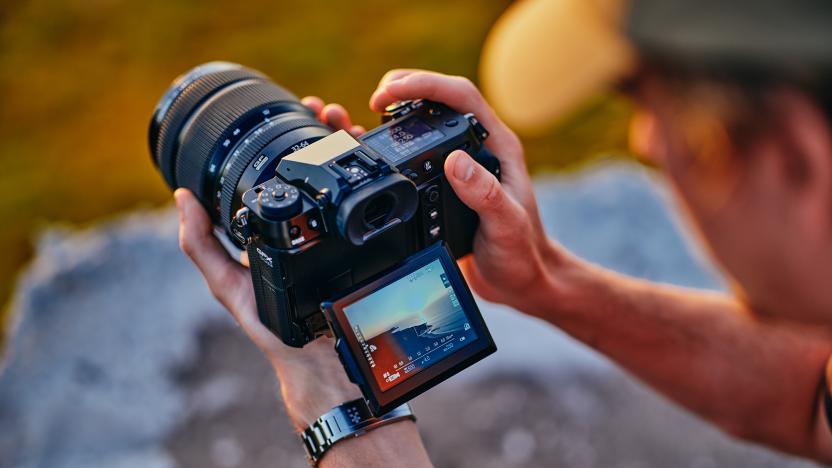Tips and Techniques: How to Use a Mirrorless Camera Effectively
Professional photographers often seek ways to enhance their craft, and one significant leap forward in the world of photography is the advent of the mirrorless camera. These innovative devices have revolutionized how we capture stunning imagery, offering flexibility and advanced features that traditional DSLRs may lack. But to unleash the full potential of a mirrorless camera, you must understand its functionalities and techniques. Let's dive into how to use a mirrorless camera effectively.

Understanding the Basics of Mirrorless Cameras
Before diving into advanced techniques, it's crucial to have a solid grasp of the basics. A mirrorless camera operates without the mirror mechanism found in traditional DSLRs, which allows for a more compact and lightweight design. The absence of the mirror means you can often achieve faster shutter speeds and continuous shooting rates.
Familiarize Yourself with the Camera's Interface
Most mirrorless cameras offer a user-friendly interface, but it's essential to get comfortable with the menu system, button layout, and custom settings. Spend some time navigating through your camera's interface to become proficient in adjusting settings on the fly.
Basic Camera Settings
Understanding and optimizing your cameras settings is crucial. Pay close attention to ISO, aperture, and shutter speed. These settings are foundational for any professional photographer looking to master their craft with a mirrorless camera.

Advanced Techniques for Mirrorless Cameras
Now that we've covered the basics, let's explore some advanced techniques that can elevate your photography.
Utilize Focus Peaking
One of the standout features of mirrorless cameras is focus peaking. This highlights the areas of your frame that are in focus, providing a visual guide that can significantly aid in achieving sharp images.
Leverage Electronic Viewfinders (EVFs)
Electronic viewfinders give a real-time preview of your shots, including exposure and depth of field changes. This can be particularly useful in challenging lighting conditions, where traditional optical viewfinders might fall short. Learn more about the advantages of EVFs in our detailed guide to understanding the purpose of a mirrorless camera (https://photo4art.com/blogs/news/what-is-the-purpose-of-a-mirrorless-camera).
Experiment with Different Lenses
Mirrorless cameras are often compatible with a wide range of lenses. Experimenting with various lenses can help you find the perfect combination to suit different shooting scenarios. From wide-angle to telephoto, the possibilities are endless.

Practical Applications of Mirrorless Cameras in Professional Photography
Professional photographers are always looking for new ways to capture unique images. Here are some practical applications of a mirrorless camera in various photography genres.
Portrait Photography
When it comes to portrait photography, a mirrorless camera's eye-detection autofocus can be a game-changer. This feature ensures your subject's eyes are always in focus, resulting in sharp and compelling portraits.
Landscape Photography
For landscape photography, the lightweight nature of mirrorless cameras can be advantageous. You can hike longer distances without the burden of a heavy camera, and features like in-body image stabilization (IBIS) will help you capture sharp images even without a tripod.
Action and Sports Photography
The fast shutter speeds and high continuous shooting rates of mirrorless cameras make them perfect for action and sports photography. Capture every moment with precision, thanks to features that reduce motion blur and enhance focus tracking.
Travel Photography
The compact size of mirrorless cameras makes them ideal for travel photography. Whether you're capturing the hustle and bustle of a foreign city or the serene landscapes of a remote destination, these cameras offer the flexibility you need.

Troubleshooting Common Issues
Like any piece of technology, mirrorless cameras can come with their own set of challenges. Heres how to tackle some common issues.
Battery Life
One common complaint is the shorter battery life compared to DSLRs. To mitigate this, always carry a spare battery and consider turning off the electronic viewfinder when not in use.
Overheating
Extended video recording sessions can sometimes cause the camera to overheat. Ensure you give your camera breaks between long shoots to avoid this issue. Learn more about the unique characteristics of mirrorless cameras (https://photo4art.com/blogs/news/what-is-a-characteristic-unique-to-a-mirrorless-camera).
Firmware Updates
Always keep your camera's firmware updated to ensure optimal performance. Firmware updates can solve bugs and improve the overall user experience.
Conclusion
Mastering how to use a mirrorless camera can open up a new world of creative possibilities for professional photographers. From optimizing camera settings to employing advanced techniques, theres much to explore. For more tips and techniques, check out this comprehensive guide (https://www.adobe.com/creativecloud/photography/discover/mirrorless-camera.html). Happy shooting!
FAQs
What makes a mirrorless camera different from a DSLR?
A mirrorless camera lacks the mirror mechanism found in DSLRs, offering a more compact and lightweight design while providing similar image quality.
Can you use DSLR lenses on a mirrorless camera?
Yes, many mirrorless cameras are compatible with DSLR lenses through the use of adapters.
Is a mirrorless camera better for video recording?
Generally, mirrorless cameras offer better video capabilities, including higher frame rates and 4K recording, along with advanced autofocus features.
As an Amazon Associate, I earn from qualifying purchases.

